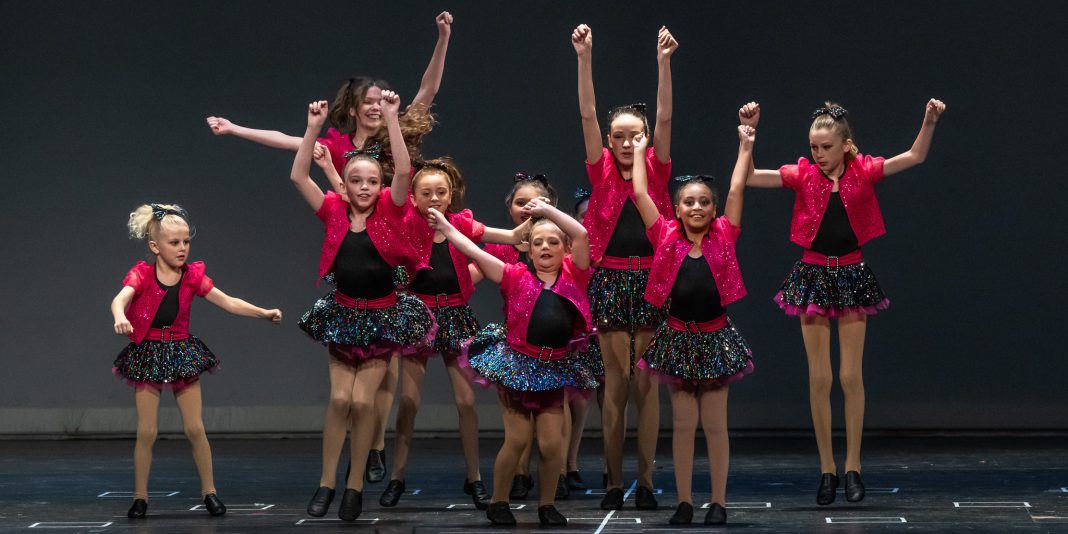By James Slemp
Close to 500 boys and girls, aged two and a half to 18, chasséd into the Fort Smith Convention Center on June 1st to perform for parents and friends in Chance 2 Dance’s (C2D) tenth annual dance recital titled Celebrat10n Recital 2024. The recital featured five separate sessions covering ten hours:
Two hours for the dancers on the competition teams
Two hours each for the dancers from the Alma and Greenwood studios
Two sessions of two hours for the dancers from the Van Buren studio
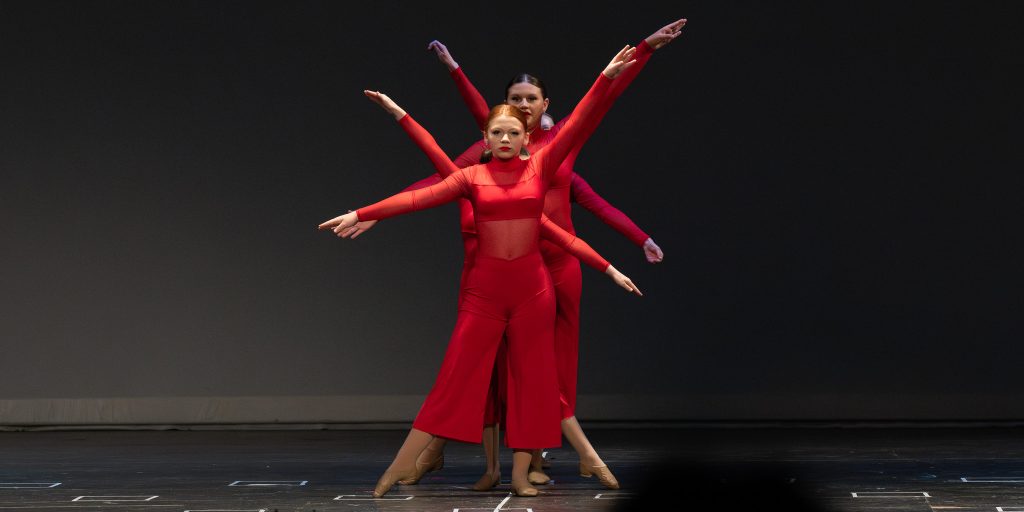
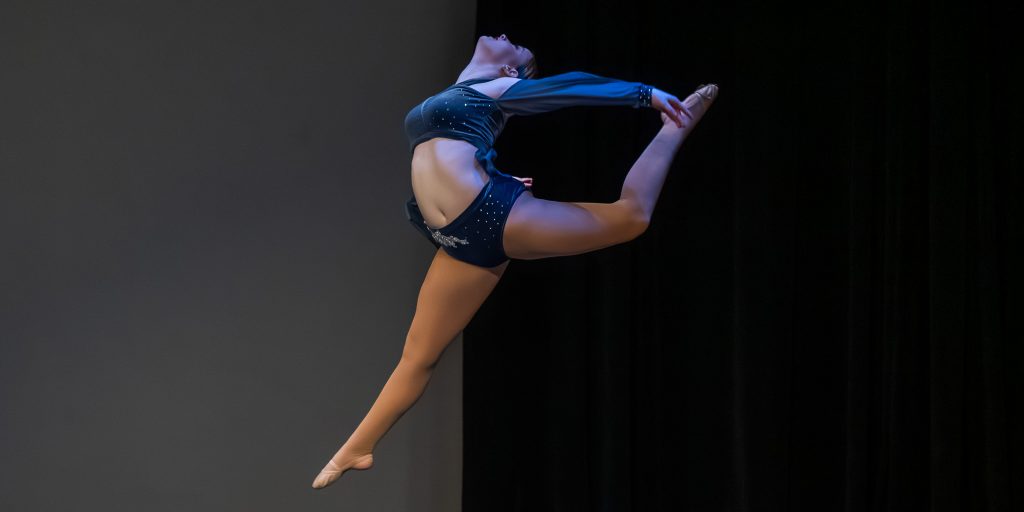
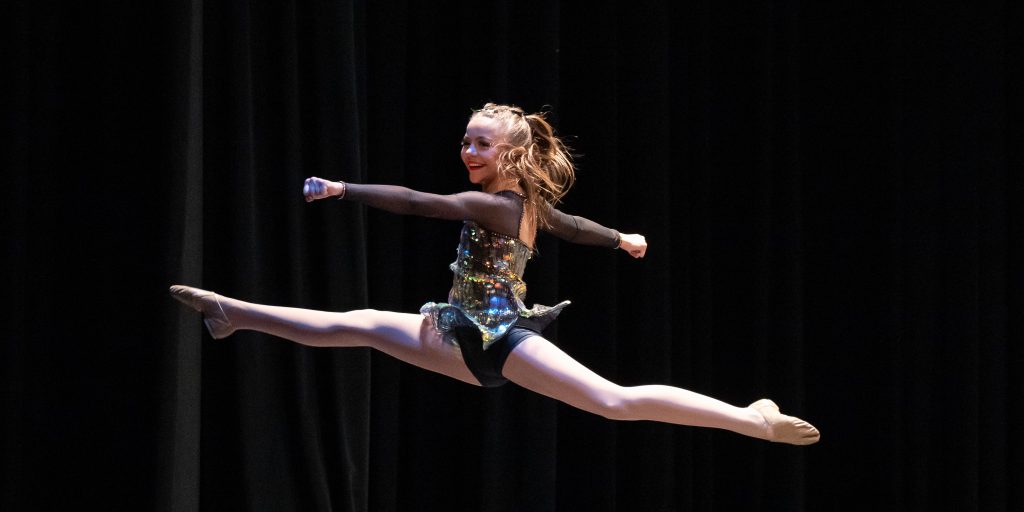

Various styles of music filled the auditorium as brightly clad soloists and groups from two to over ten showcased their newly acquired techniques and skills. As each session closed on bows, waves, and tears, the dancers and staff closed out another year at C2D. Leading up to this all-day event required Megan Park-Grimm, owner and artistic director of C2D, and her excellent staff of instructors and coaches to plan, develop, coordinate, and instruct the various dances starting as early as June of the preceding year.
Megan Park-Grimm grew up in Van Buren. She started dancing when she was six years old at a studio that has since closed in Van Buren, Dance Unlimited. Megan danced throughout her childhood at both the studio and in school. She attended the University of Arkansas- Fayetteville and was on the Razorback dance team while studying chemical engineering. Megan took her degree first to Tulsa and then to Little Rock, where she taught at a dance studio. She also danced for the Tulsa 66ers, a D-league basketball team. Having never wanted to get into the business side of dance, it took a tremendous calling for her to transfer to Fort Smith and open a studio in her hometown of Van Buren. Megan opened the first C2D studio in August 2014. She has seen numerous changes in the business side of dancing and the techniques and opportunities for the dancers in her ten years in business. She bought a studio in Greenwood in the Fall of 2019 and opened in 2020. She opened her third studio in Alma in January 2023. I sat down with Megan and two of her instructors, Kayte Jeffress, and Ally Wysocki, at her flagship studio in Van Buren to find out what drives each of them to teach and coach, how dance impacted their lives, and what impact dance has on the dancers and the community.
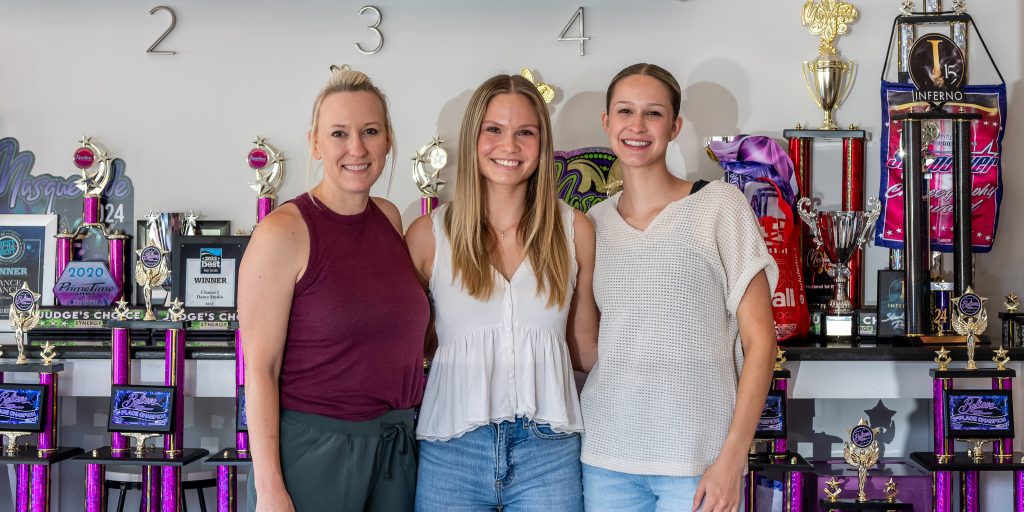

Resident News Network: You took your engineering degree from the University of Arkansas into Tulsa’s workforce and then to Little Rock. You mentioned that you felt a calling to open a dance studio, which was taking away from your engineering career. How daunting was that decision?
Megan: I have danced most of my life and taught as I got into the workforce, but I never saw myself as an owner of a studio. The calling I felt, however, was strong, and I wanted to take the leap so everyone could have a chance to dance. I didn’t have any business experience or education before I opened C2D, but my dad opened a business and mentored me. I learned a lot as I went along, and I’m still learning, mainly through trial and error. I wish I had taken business classes in college, but I’ve been fortunate to have some great mentors. We have recreational classes for kids who want to dance but don’t want to compete, and we have competition classes where we enter competitions. We also have all-star dance and cheer programs that prepare the kids for high school dance teams.
RNN: You’ve grown from one to three studios in ten years. How have you maintained and increased your enrollment, especially through COVID-19?
Megan: My experience in the dance studio as a kid was fantastic. I loved coming to the studio and wanted other kids to feel the same way. I saw an opportunity here in Van Buren to open a studio that could provide a place for kids to learn dance, and I could do some outreach to the community. The previous studio was closed for about five years, and they provided a lot of equipment and an old client list that I used to contact dancers. Social media wasn’t as big when I started, so I used old-school methods to market. I posted flyers and yard signs all over the surrounding towns and placed advertisements in the newspaper. As I became more successful, I’ve reduced my time and resources for marketing. Most of my new students come to C2D by word of mouth. I changed this year’s recital to help increase enrollment in our competition teams. I sprinkled some competition team dances throughout the five sessions. I received a few calls from parents right after the recital that saw those performances and wanted to know how to get their children into those classes.
RNN: What are some of the benefits that dance provides a student?
Megan: Dance provides so many positive physical and mental aspects. Kids, especially our younger ones, learn to be independent from their parents. It teaches them to follow instructions, gives them confidence and a sense of purpose, and provides them something to look forward to each week. They also develop leadership skills and help them overcome shyness. The kids also make friends that many will have throughout their lifetime. Kids also develop flexibility, total body strength, and footwork that helps them in other physical activities. To be successful, you must have a studio background because that’s where you learn the technique. Taking ballet, jazz, and all other styles you learn in the studio helps perfect your art. You may not do that dance style on the football field or wherever you’re dancing, but you can tell the dancers trained in a studio because their technique is impeccable. I always offer technique classes because I know what it takes to be successful on a dance team. The studio is the foundation. Studio dance helps prepare dancers for the teams in high school and college. We’ve seen a slight increase in boys enrolling in dance, but I’d like to see more. Younger boys need to understand the importance of stretching and flexibility for sports, which they learn through dance classes.
RNN: Do you have issues with injuries, given the highly athletic nature of dance?
Megan: We’ve seen a few injuries throughout the year, as we always have. We monitor and limit our dancers to the moves and routines they perform based on their abilities, how flexible they are, and how strong they are to reduce and prevent injuries. We used to have a strength and conditioning class, but it wasn’t popular with the dancers, so we removed it. We’re implementing a new acro program in the Fall that breaks everything down in steps and teaches you how to do every element of a trick and how to do it properly and safely and build the muscles and flexibility to do it in a very systematic way. It will help our dancers from getting injured.
RNN: Have you had opportunities to work with local schools, especially high school dance teams?
Megan: I have taught dance technique and ballet classes to some of the schools in the past. I’ve received video recordings of school dances and provided feedback to the coaches. I’ve made myself available to all the schools in the area because I know how important it is for a kid to be a part of a school’s dance team. However, I haven’t received any opportunities to teach dance technique and ballet to school sports teams, although dancing has been shown to help an athlete’s flexibility and footwork.
RNN: What do you see as the next major step for C2D?
Megan: I would like to have a studio in Fort Smith. Fort Smith has a market for another studio, and we can bring something to offer those families that live in that market and don’t want to drive to Van Buren or any of my other studios. My dad has always pushed me to franchise out C2D, but that’s a little overwhelming to me right now. It’s been done in the dance world, but I’m not sure if I’m ready to do it. We’re doing a lot of things now since I have more resources. We’re bringing in more consistency across the classes and the studios to help the dancers learn and develop at a similar pace. Students who miss a class can make it up on a different day or even at a different studio. Our instructors will have a more directed focus to help dancers learn at the same pace while developing them for those upper-level classes. I was looking at the Poteau market, but the Greenwood studio was on the market, so I bought that and expanded into Greenwood.
RNN: Have you made any changes for this upcoming year?
Megan: We shortened the individual recital sessions this year and eliminated some solos to help shorten the overall program. The audience and the dancers were appreciative. In years past, we scheduled two or three sessions on recital Saturday, but they would last four hours each. A parent or grandparent would come to see their child perform in a two-minute program, and they would have to watch the entire session before picking their child up. That was too long. We’re going to limit the recital to four sessions in the future. We’re also making changes to our performance team this year. When I started the program years ago, it fit with what we needed at that time, but since COVID, there have been few opportunities and events that we can participate in. We still get asked to perform in parades and festivals, so I’m having a small group of dancers perform at those parades and festivals during the Fall holidays. I want to do more team-building activities for the competition teams to bring some of that fun back to that group. I’ll combine those team-building activities with our outreach programs, such as performing at a nursing home and then going out to dinner to build that bond between the dancers.
RNN: When do you start getting ready for the next season?
Megan: Planning always seems to continue; it’s a year-long process that starts as soon as the dance recital is over and even earlier. I figure out the staffing in January of the previous year and then generate a schedule for the classes which is sent out April 1st. Early enrollment starts after the schedule comes out with special pricing. The competition teams finish their current season after we have tryouts for next year. However, we are giving them July off this year. I start budgeting for competitions in June so they can have pricing for the dancers in late July. I find a theme for the recital, so it helps the teachers find songs and choreography. For competition routines, I’ll often find a song I like, and a dance starts forming in my mind. Dance is constantly evolving, and the kids bring in moves and styles that they want to try, and they find their way into the choreography. We tailor our choreography to fit the skills and abilities of the dancers in the routine. We want to showcase dancers with higher levels of technique without excluding less advanced ones. Recital planning starts with the sizing and ordering of costumes in January. Before that, the teachers must choose their songs and begin choreography for their routines. We have open enrollment all season long; we don’t turn anyone away, so anyone can take our classes. The recital is optional, so we can offer dance classes to kids who can’t afford the costumes for recitals or are too shy to get on stage. That way, they can still learn and experience dance.
Kayte, 21, and Ally, 18, danced for C2D and are part of Megan’s teaching staff.
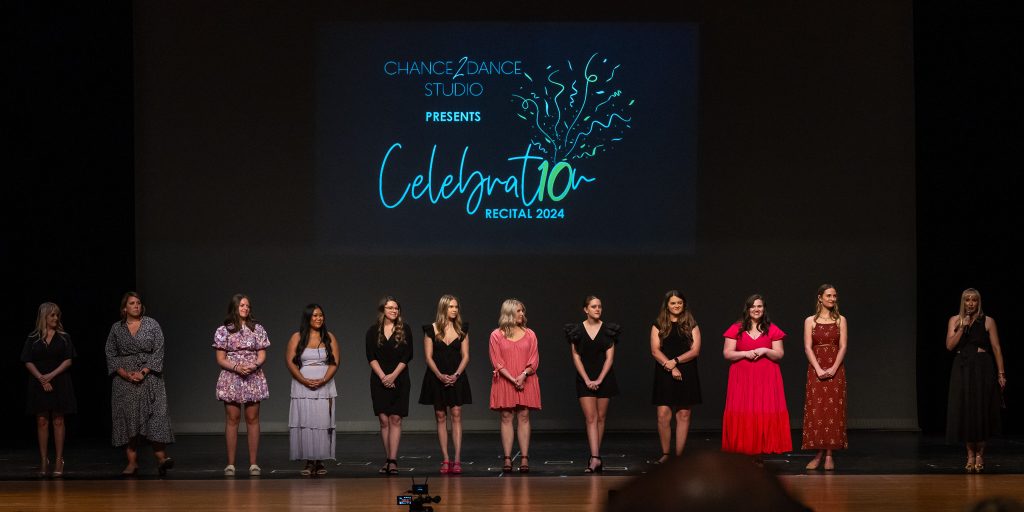
RNN: Ally, tell me your story. How did you get into dance, and why have you become a teacher?
Ally: My mom asked me what I wanted to do when I was around four. I watched Dance Moms on TV, so I told her I wanted to dance. She saw a C2D lawn sign and signed me up, and I’ve been dancing since then. I started teaching dance at the Alma Studio a year ago, and when I graduated, I decided to delay college and stay as a teacher there. I love to dance, but I find it more fun to teach. I’ve expanded the number of classes I teach this year. I’ve added two competition dances to my regular classes. I like to see the kids learn new skills and be so happy.
Kayte: I started at a different studio. The owner worked at a Boys and Girls Club, and she taught a dance and cheer program. She convinced my mom to sign up for classes at her studio, and I eventually ended up on her competition team. When she closed her studio and moved to C2D, I followed her. I graduated three years ago and have taught here in Van Buren. I’ve since received my real estate license but won’t give up teaching at C2D. I love seeing the kids learn new skills they show off to everyone. Some kids are so hard on themselves, so seeing them succeed on the dance floor is great.
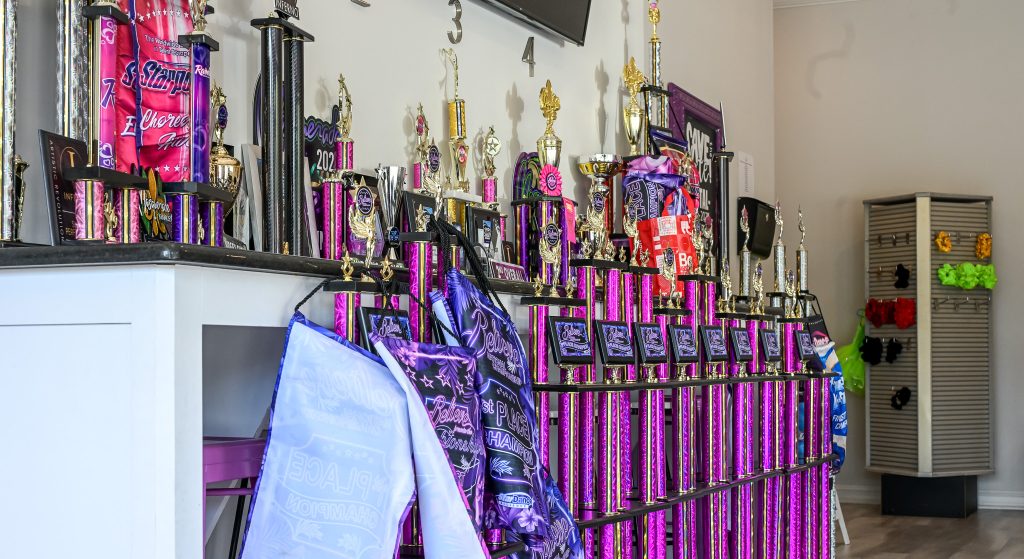
I want to thank Megan Park-Grimm, Ally Wysocki, and Kayte Jeffress for sitting with me to discuss dance and C2D. Megan has developed an outstanding program, with the help of many of her former dancers, that has grown both her enrollment and her staff. With most of her staff former C2D dancers, she’s been able to focus more on the overall training program and reach a bigger market. This year’s 10th annual dance recital was amazing, and I’m looking forward to their eleventh.

